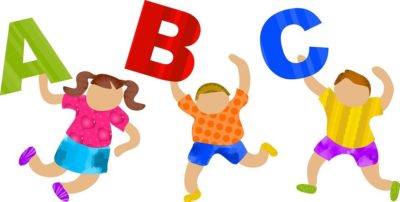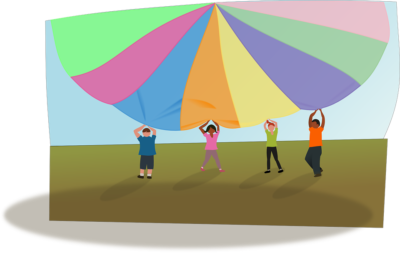A Twist on Teaching: Making Learning Fun and Effective (Part 1)
Teaching our children new skills is a fundamental component of what we do in behavior analysis. Often, our instruction occurs sitting down with the child on the floor or at a table. As an effective method, it allows us to teach in a very direct. Although this technique is successful, our field is continuously expanding upon enjoyable ways we can effectively teach children! In this blog post, we will give some ideas on how to maximize teaching in fun and engaging ways by creating teaching environments that consist of:
1. Embedding teaching into fun activities
2. Including group activities
1. Embedding Teaching:

One great way to enhance teaching is to incorporate learning opportunities into entertaining activities. Let’s review a few examples of how to do this:
Bowling: Indoor bowling is a great game for kids! Within this game, opportunities to practice waiting skills, turn taking, gaining attention, requesting items, and more can be generated!
Example for requesting an item: While bowling, children can request the bowling ball from their parent or skills trainer (i.e., the teacher) when it is their turn to bowl (ex: “May I have the bowling ball, please?”). If the child does not engage in the skill, the teacher can explain, model, and re-present the opportunity for the child to practice again!
Ring Toss: While playing a game of ring toss, children can practice turn taking, gaining attention, requesting items, responding to their name being called, saying thank you and more!
Example for gaining attention of someone: While playing ring toss, children can gain the attention of teachers when it is their turn to play or when they need something from the teacher. If it is the teacher’s turn to play, the teacher can divert their attention elsewhere, creating the opportunity for the child to engage in the skill of asking for their attention (ex: calling their name, tapping their shoulder, saying excuse me, etc.). If the child does not engage in the skill, the teacher can explain, model, and re-present the opportunity (diverted attention) for the child to practice again!
Coloring: Children can practice waiting skills, requesting items, gaining attention, following instructions, and more!
Example for waiting skills: The teacher can provide limited crayons while doing a coloring activity. If the child requests another color, this becomes the opportunity for them to wait while the teacher uses it. The teacher can instruct the child to wait; if the child responds appropriately (ex: saying okay and doing something else), praise or the item can be provided. If the child does not engage in the correct response, the teacher can explain, model, and re-present the opportunity for the child to engage in the skill again.
2. Including Group Activities:

Another way to add fun and engaging components to teaching is to include a group of children! Having a group offers the benefit of a setting that resembles many social situations (ex: playground at school) and it allows for unprompted opportunities to practice a number of skills. Competitive and cooperative games like hide and go seek, bingo, bowling, tag, freeze dance, and more can be played to build cooperation skills (ex: working as a team, communicating with peers, etc.) and appropriate competition skills (ex: accepting loss, congratulating someone else’s win, etc.). In addition, using activities like coloring, crafts, gardening, and more in a group provides instruction that closely resembles group work activities at school; this can allow for greater generalization to classroom settings!
Here are the same games explained above, but now including a group component:
Bowling:
Bowling offers a number of opportunities for skill practice. The skills explained above can all be altered to include peers (ex: requesting for an item from a friend). An additional skill that can be practiced with peers is complimenting another team’s win. While bowling, children can practice complimenting other team members on their performance (ex: saying “good job!” when a peer knocks down the bowling pins).
Ring Toss:
There are a number of opportunities to practice skills with peers while playing ring toss. First, the skills explained above can all be altered to include a peer (ex: requesting attention from a peer by saying the peer’s name). An additional skill that can be practiced with peers is accepting a loss in a game. While playing ring toss, children can practice how to appropriately accept a loss (ex: the child can saw “Aw man, well maybe next time!”).
Coloring:
First, the skills explained above can all be altered to include a peer (ex: waiting for a peer to use crayons by saying “Okay” and continuing to color). An additional skill that can be practiced with peers is complimenting a peer’s work (ex: “The butterfly is really pretty” or “That’s a good picture!”). The finished project or while the children color act as opportunities for the child to compliment their friend’s work. If the students engage in the correct skill, it provides the opportunity to engage in another skill, the peer saying “Thank You.”
All of these skills can be practiced by children multiple times throughout an activity or game!
Summary: These two methods provide a twist on teaching and can be very advantageous for our children! Adjusting our teaching methods by embedding lessons into activities and using group instruction can be effective and can add an additional fun component to the learning process! Keep an eye out for ‘Part 2’ of this post that will continue the discussion on enhancing teaching!


